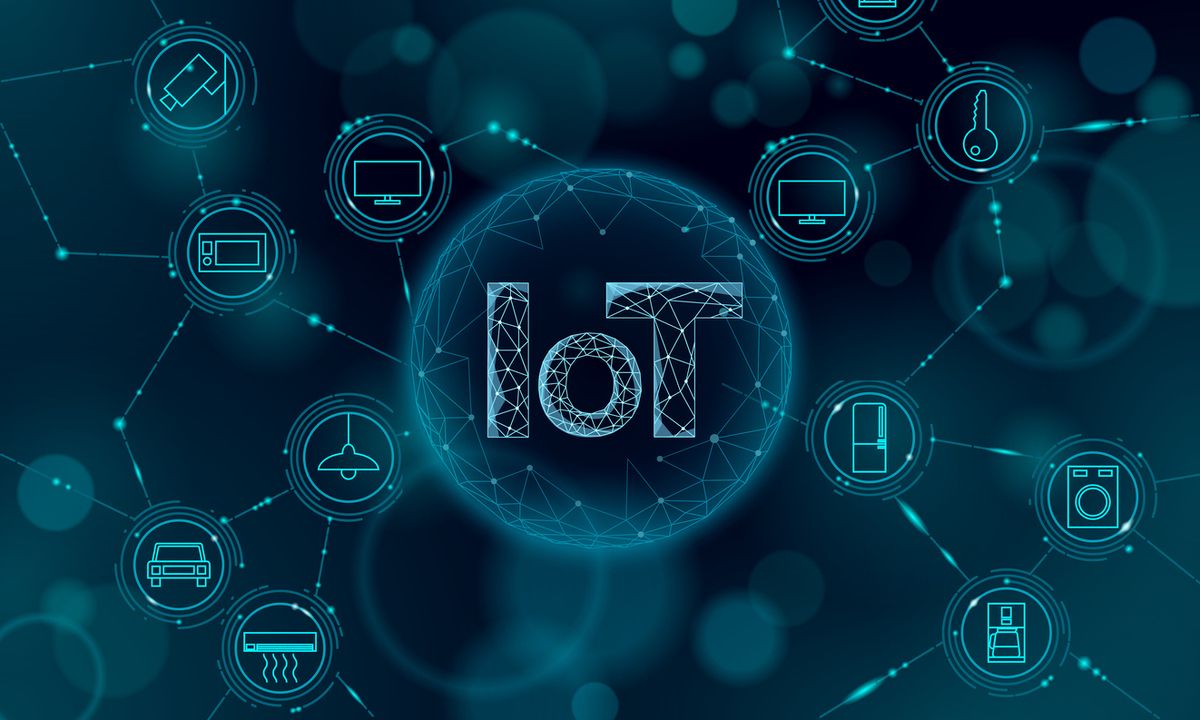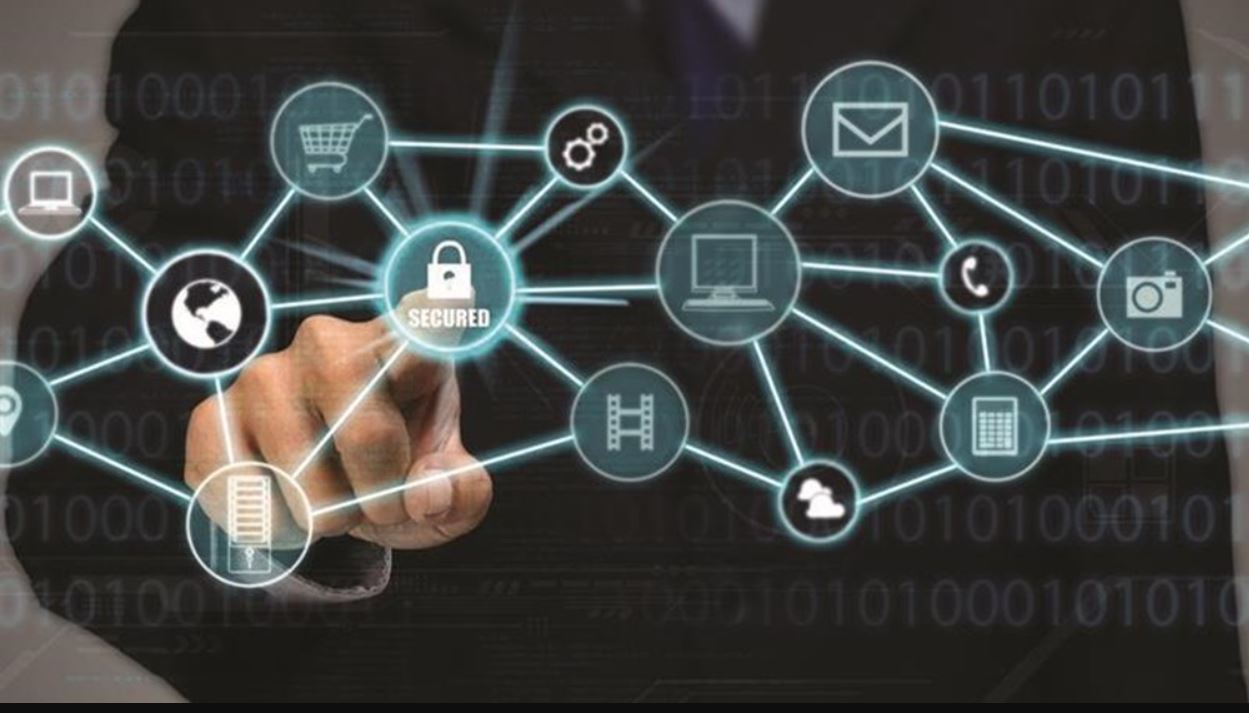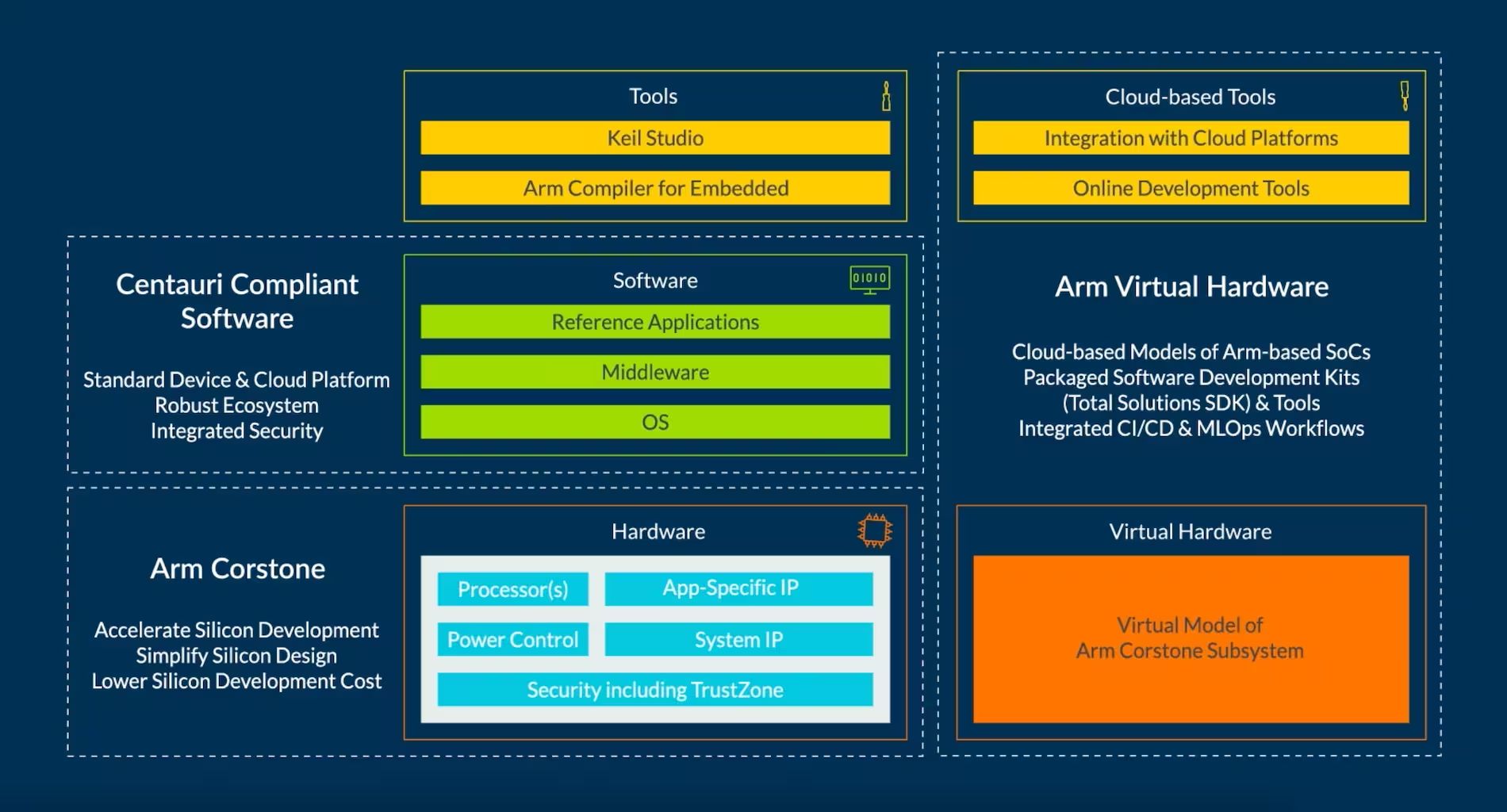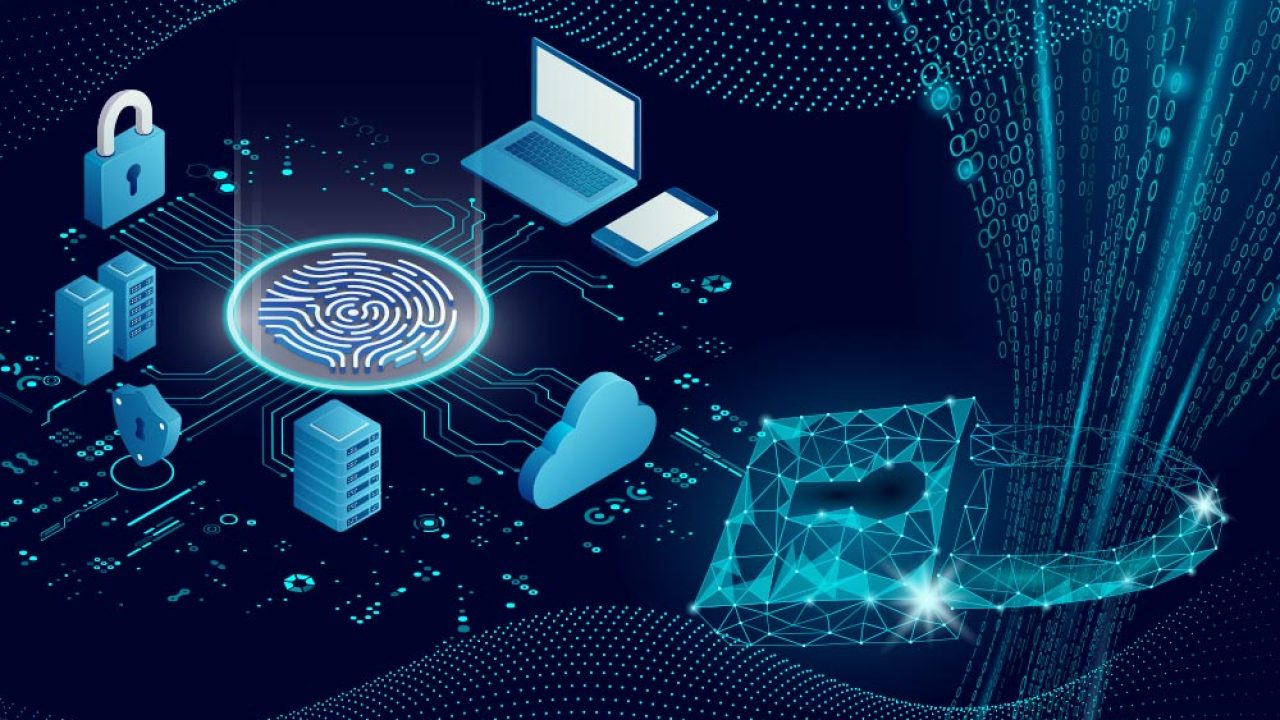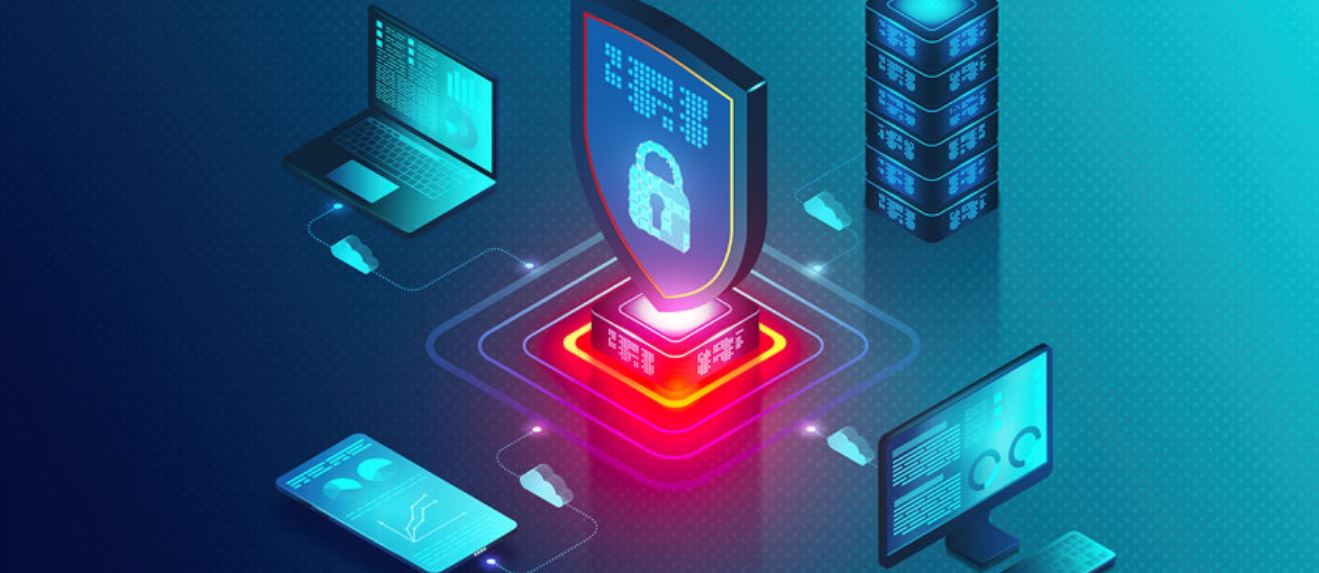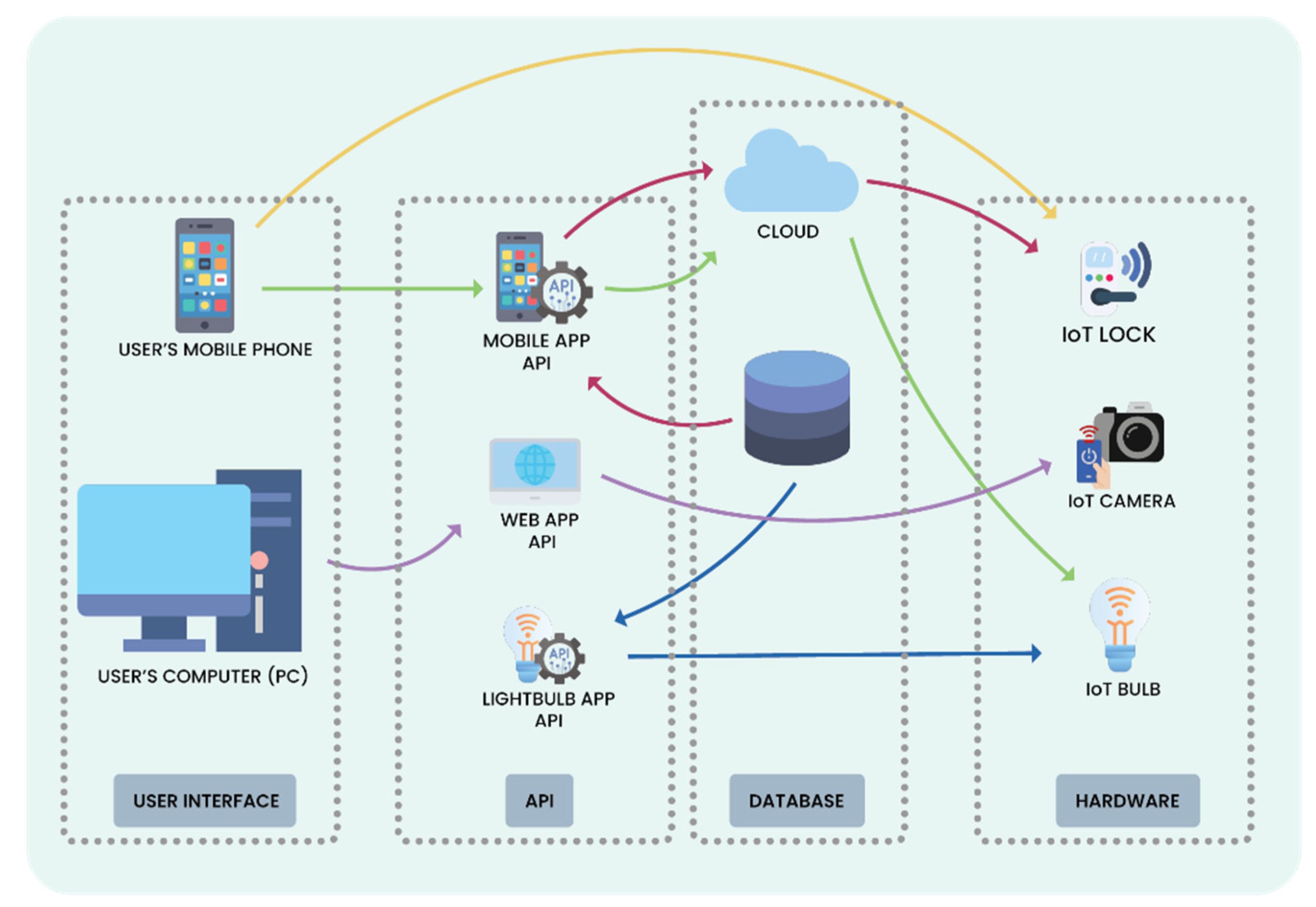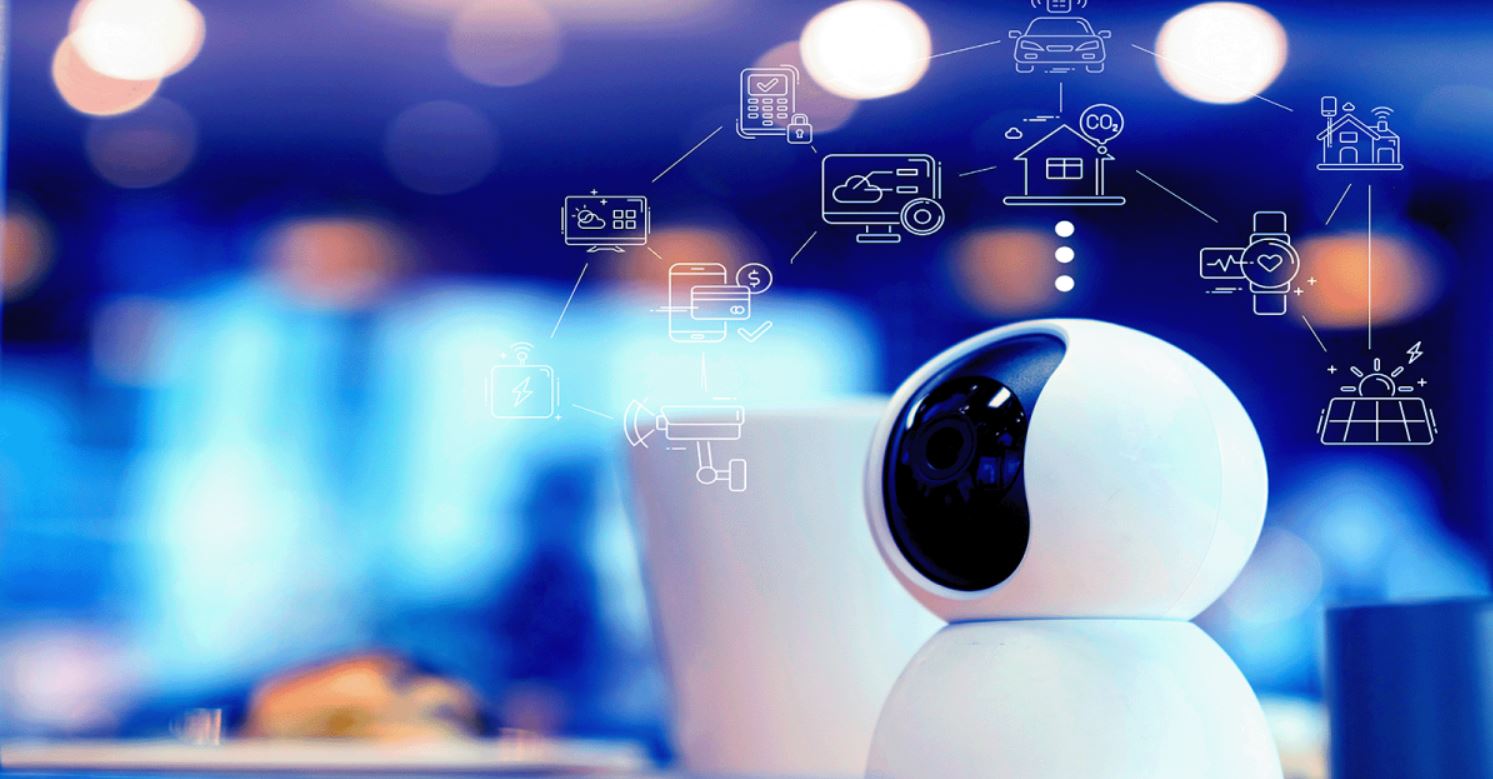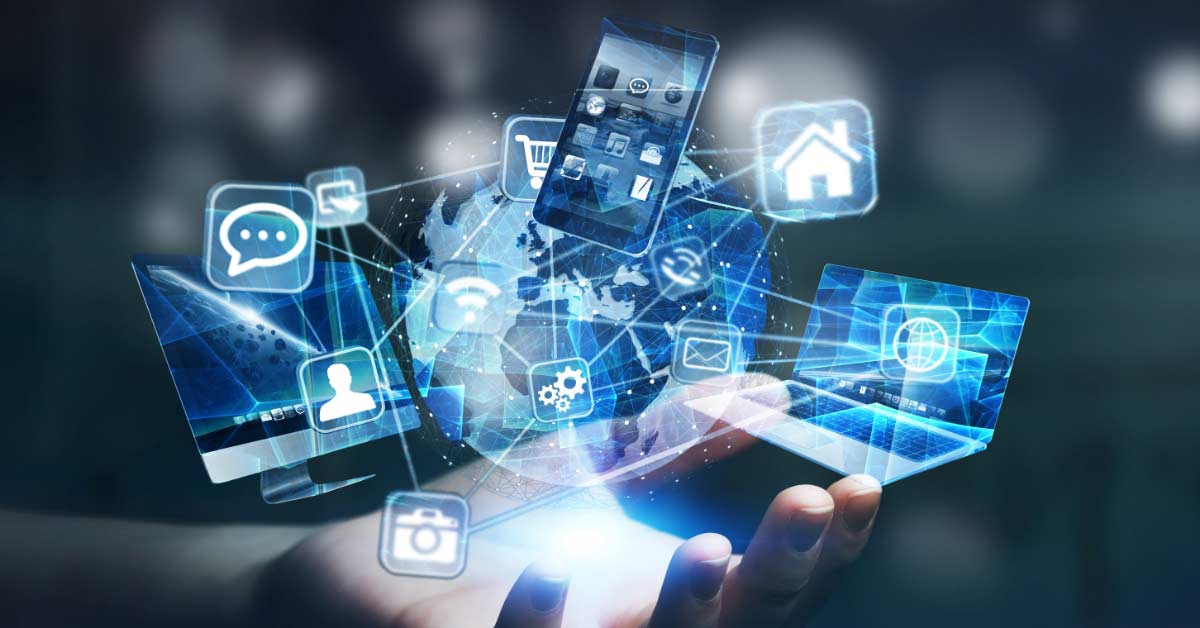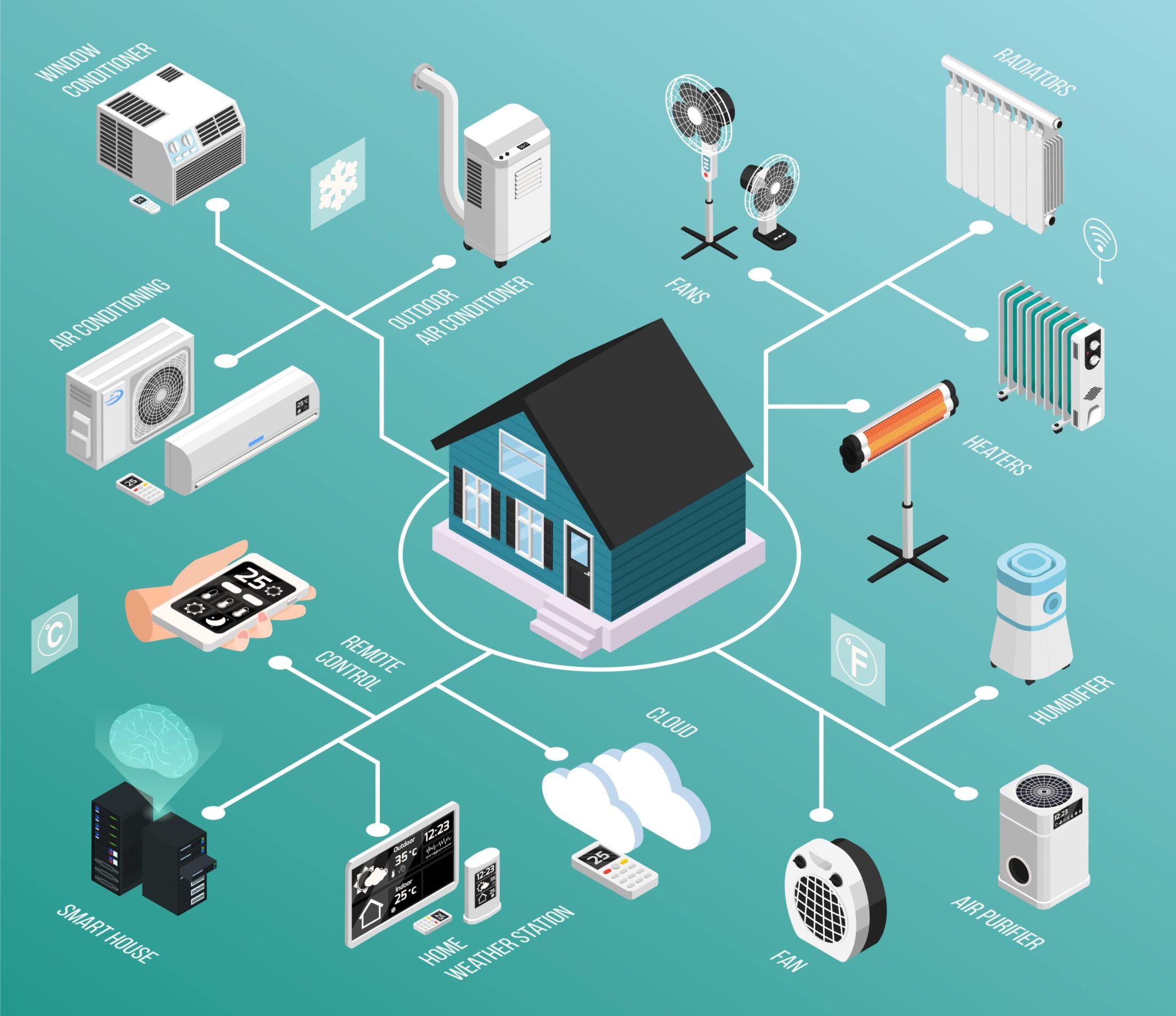Introduction
The Internet of Things (IoT) has revolutionized the way we live and work. It refers to the network of interconnected physical devices, vehicles, appliances, and other items embedded with sensors, software, and connectivity that enable them to collect and exchange data. This technology has infiltrated almost every aspect of our lives, from our homes and workplaces to industries, transport systems, and even our bodies.
The IoT has a profound impact on various sectors, making them more intelligent, efficient, and interconnected. It has given rise to a wide range of applications that are transforming the way we interact with technology and each other. From smart home devices and wearable technology to industrial automation and connected vehicles, the possibilities are endless.
As the IoT continues to evolve, it raises the question: which technology is most likely to be associated with IoT? In this article, we will explore some of the key technologies that are closely linked to the IoT and driving its growth.
Smart Home Devices
Smart home devices have become increasingly popular in recent years, transforming our traditional homes into connected and intelligent living spaces. These devices are designed to make our lives easier, more convenient, and more energy-efficient by automating various functions and allowing us to control our home devices remotely.
One of the key technologies associated with smart home devices is voice recognition. Devices like Amazon Echo and Google Home utilize voice assistants like Alexa and Google Assistant to execute commands, play music, provide weather updates, control other smart devices in the home, and much more. This hands-free experience has streamlined everyday tasks and enhanced the overall convenience of managing our homes.
Another significant technology making waves in the smart home industry is home automation. With the help of internet connectivity and smart hubs, homeowners can control and automate lighting, temperature, security systems, and even household appliances. This allows for energy-saving practices, improved home security, and increased comfort and convenience.
Furthermore, smart home devices often incorporate artificial intelligence (AI) technology. AI algorithms analyze usage patterns and preferences to learn our habits and automatically adjust settings accordingly. For example, a smart thermostat can learn the temperature preferences of household members and adjust the settings accordingly, optimizing energy usage and providing personalized comfort.
The IoT has also made it possible to integrate different devices and systems within the home, creating a seamless network. Home automation hubs allow users to control multiple devices through a single interface, simplifying the management and interaction between different smart devices such as lights, thermostats, cameras, and entertainment systems.
In summary, smart home devices are a key component of the IoT ecosystem. The integration of technologies like voice recognition, home automation, artificial intelligence, and interconnected systems has transformed houses into intelligent and interconnected entities. As technology continues to advance, we can expect even more innovative and intuitive smart home devices to enhance our living spaces.
Wearable Technology
Wearable technology has gained significant popularity in recent years, revolutionizing the way we track and monitor our health, fitness, and daily activities. These devices are designed to be worn on the body, typically as accessories or clothing, and are equipped with sensors and connectivity capabilities to collect and transmit data.
One of the most common types of wearable technology is fitness trackers. These devices, such as Fitbit and Apple Watch, monitor metrics like heart rate, steps taken, calories burned, and even sleep patterns. They provide users with valuable insights into their physical activity levels and can help motivate and track progress towards health and fitness goals.
Another emerging aspect of wearable technology is smartwatches. These wrist-worn devices not only serve as a timekeeping accessory but also provide various functionalities such as receiving calls and messages, accessing apps, and tracking health and fitness data. With the ability to sync with smartphones and other devices, smartwatches have become an integral part of our digital lives.
In addition to fitness trackers and smartwatches, wearable technology is also making waves in the healthcare industry. Wearable medical devices, like glucose monitors and ECG monitors, enable individuals to monitor their health conditions more conveniently and accurately. This technology has the potential to revolutionize healthcare by allowing doctors to remotely monitor patients and make more informed decisions.
Furthermore, wearable technology is not limited to personal use. It has also found applications in industries like sports and entertainment. Athletes can wear sensors embedded in sports apparel or equipment to track their performance metrics and optimize their training. Virtual reality (VR) headsets, another form of wearable technology, transport users to immersive and interactive virtual worlds for gaming, entertainment, and even educational purposes.
As the IoT continues to evolve, wearable technology is becoming more advanced and diverse. The integration of sensors, connectivity, and even AI algorithms allows these devices to collect and analyze data, provide personalized insights, and even anticipate users’ needs. With ongoing technological advancements, we can expect wearable technology to continue transforming various aspects of our lives.
Industrial Automation
Industrial automation is another key area closely associated with the Internet of Things (IoT). It involves the use of smart technologies and interconnected systems to streamline and optimize industrial processes, resulting in improved efficiency, productivity, and cost savings.
The IoT enables the integration of machinery, equipment, and systems within industrial environments. This integration allows for real-time data collection, analysis, and control, leading to better decision-making and more efficient operations.
One of the significant technologies driving industrial automation is the use of sensors and actuators. These devices are embedded in machinery and equipment to monitor and control specific parameters, such as temperature, pressure, and speed. The data collected by these sensors is transmitted to a central system where it is analyzed and used to optimize the performance of the industrial process.
Another crucial aspect of industrial automation is the use of robotics. IoT-enabled robots can perform repetitive tasks with high precision and accuracy, freeing up human workers for more complex and value-added activities. These robots can also be programmed to work in harmony with other machines and systems, enhancing overall productivity and efficiency.
Furthermore, the IoT facilitates predictive maintenance in industrial settings. By collecting real-time data from sensors embedded in machinery, maintenance teams can identify potential issues and proactively address them before they cause significant disruption or damage. This predictive approach minimizes downtime, reduces maintenance costs, and extends the lifespan of industrial equipment.
In addition to optimizing processes and reducing costs, industrial automation also enhances worker safety. IoT-enabled systems can monitor working conditions, detect hazards, and alert workers in real-time to prevent accidents. This technology ensures a safer working environment and reduces the risk of injuries.
Industrial automation has the potential to transform industries such as manufacturing, logistics, and energy. By leveraging the power of the IoT, companies can streamline operations, improve productivity, and gain a competitive edge in the market.
In summary, industrial automation is a crucial element of the IoT ecosystem. By integrating sensors, robotics, and predictive maintenance, industries can achieve higher efficiency, productivity, and safety. As technology advances, we can expect even more sophisticated automation solutions to revolutionize the industrial landscape.
Smart Cities
The concept of smart cities is gaining momentum as urbanization continues to accelerate globally. Smart cities leverage the Internet of Things (IoT) to improve the quality of life for citizens, enhance sustainability, and optimize the utilization of resources.
One of the key technologies associated with smart cities is connectivity. With the proliferation of IoT devices, cities can be equipped with sensors that collect real-time data on various aspects such as traffic flow, air quality, waste management, and energy consumption. This data can then be analyzed to gain insights and make informed decisions to improve the overall functioning of the city.
Transportation is a major focus area in smart cities. IoT-enabled sensors and devices can monitor traffic conditions, optimize traffic signal timing, and enable smarter parking solutions. This helps reduce congestion, shorten travel times, and minimize greenhouse gas emissions, contributing to a greener and more efficient urban environment.
Energy management is another critical aspect of smart cities. The IoT enables the monitoring and control of energy consumption in buildings, streetlights, and other infrastructure. By analyzing real-time data, energy usage can be optimized, and renewable energy sources can be integrated more effectively, leading to reduced energy waste and a more sustainable energy ecosystem.
Public safety is also enhanced in smart cities. Surveillance cameras and IoT sensors can be utilized to monitor public areas, detect abnormalities, and respond to emergencies. Additionally, smart street lighting systems can be integrated with sensors to automatically adjust lighting levels based on the presence of pedestrians or vehicles, improving safety and saving energy.
The IoT also plays a vital role in improving waste management in smart cities. Sensors in garbage bins can notify waste management authorities when they are full, enabling more efficient collection routes and reducing overflowing bins. Smart waste management solutions contribute to cleaner streets, minimized waste generation, and optimized resource allocation.
Moreover, smart cities focus on citizen engagement and empowerment. Through mobile applications and online platforms, residents can access real-time data about their city and actively participate in decision-making processes. This inclusivity helps build a strong sense of community and fosters collaboration between citizens and local authorities.
In summary, smart cities leverage IoT technologies to optimize various aspects of urban life, including transportation, energy management, public safety, and waste management. With the continuous growth of urbanization, the development of smart cities is becoming increasingly important to ensure a sustainable and high-quality living environment for citizens.
Connected Vehicles
The advent of the Internet of Things (IoT) has brought significant advancements to the automotive industry, leading to the development of connected vehicles. Connected vehicles utilize IoT technologies to enhance safety, improve efficiency, and provide a range of convenient features for drivers and passengers.
One of the key technologies associated with connected vehicles is vehicle-to-vehicle (V2V) communication. By equipping vehicles with sensors and communication systems, they can exchange real-time information with other vehicles on the road. This enables features such as collision avoidance, cooperative adaptive cruise control, and traffic signal prioritization, improving overall road safety and efficiency.
Connected vehicles also rely on vehicle-to-infrastructure (V2I) communication. This involves the exchange of information between vehicles and traffic infrastructure, such as traffic lights, road signs, and parking facilities. V2I communication enables features like real-time traffic updates, smart parking assistance, and optimized traffic flow management, leading to reduced congestion and improved navigation.
Another significant technology in connected vehicles is advanced driver assistance systems (ADAS). These systems utilize sensors, cameras, and connectivity to provide features like lane departure warning, blind-spot detection, and automatic emergency braking. ADAS helps enhance driver safety by providing warnings and assistance in critical situations.
Connected vehicles also offer a range of convenience features for occupants. IoT connectivity enables wireless integration with smartphones, allowing drivers to access navigation, music, and hands-free calling with ease. Additionally, connected vehicles can provide real-time weather updates, fuel station locations, and even remote vehicle management, enhancing the overall driving and ownership experience.
Furthermore, connected vehicle technology extends beyond personal vehicles. It has applications in fleet management, where real-time data and analytics can optimize route planning, monitor driver behavior, and improve fuel efficiency. This technology has the potential to revolutionize the logistics industry, reducing costs and environmental impact.
As the IoT continues to advance, connected vehicle technology will evolve further. The integration of artificial intelligence and machine learning algorithms will enable vehicles to learn driver preferences and adapt to individual needs. Additionally, connectivity with smart cities and infrastructure will enable seamless navigation, charging for electric vehicles, and even predictive maintenance.
In summary, connected vehicles are a significant aspect of the IoT ecosystem within the automotive industry. The integration of V2V and V2I communication, ADAS, and convenience features enhances safety, efficiency, and overall driving experience. As technology progresses, connected vehicles will play a crucial role in shaping the future of transportation.
Smart Agriculture
Smart agriculture, also known as precision agriculture, is revolutionizing the farming industry with the help of the Internet of Things (IoT). This emerging technology combines sensors, connectivity, and data analytics to optimize agricultural practices, improve crop yields, and reduce resource waste.
One of the key technologies associated with smart agriculture is soil and crop monitoring. IoT-enabled sensors can be embedded in the soil to monitor moisture levels, nutrient content, and temperature. This real-time data allows farmers to make informed decisions about irrigation, fertilization, and overall crop health. By optimizing these factors, farmers can maximize crop productivity and quality.
Furthermore, smart agriculture utilizes weather monitoring to enhance farming operations. Integrated weather stations and IoT devices provide accurate and real-time weather data, enabling farmers to plan their activities accordingly. This information helps prevent losses due to extreme weather conditions and allows for efficient utilization of resources.
Precise irrigation is another crucial aspect of smart agriculture. IoT-based systems enable automated irrigation management based on data collected from soil sensors, weather stations, and plant growth stages. This technology ensures that crops receive optimal water levels, minimizing water waste while maintaining crop health and productivity.
Additionally, the IoT is utilized for livestock management in smart agriculture. Sensors and wearable devices can monitor the health and behavior of livestock, recording data on factors such as temperature, activity levels, and feeding patterns. This data enables early detection of health issues, reducing losses and enabling farmers to provide tailored care.
Pest and disease control is also improved through IoT technologies. Smart agriculture systems can deploy sensors and cameras to monitor fields for signs of pests or diseases. Early detection allows for timely intervention, preventing the spread of pests and reducing the need for excessive pesticide use.
Lastly, smart agriculture leverages data analytics to optimize farming practices. By analyzing the collected data, farmers can gain valuable insights into crop performance, resource utilization, and overall farm efficiency. These insights enable farmers to make data-driven decisions for future planning, leading to reduced costs, increased sustainability, and improved yields.
In summary, smart agriculture has the potential to transform the farming industry, increasing productivity and sustainability. With the integration of soil and crop monitoring, weather monitoring, precise irrigation, livestock management, pest control, and data analytics, farmers can optimize their operations and achieve better results. The IoT is revolutionizing agriculture, paving the way for a more efficient and sustainable future.
Healthcare
The healthcare industry is undergoing a significant transformation with the integration of the Internet of Things (IoT). IoT-enabled devices and systems are revolutionizing healthcare delivery, patient monitoring, and overall healthcare management.
One of the key technologies associated with healthcare IoT is remote patient monitoring. Connected wearables and medical devices can collect real-time patient data such as heart rate, blood pressure, glucose levels, and more. This data can be transmitted to healthcare providers, allowing for remote monitoring of patients’ health conditions and enabling timely interventions.
IoT technology is also improving medication management. Connected pill dispensers and smart labels can remind patients to take their medication at the right time and in the correct dosage. This technology helps prevent medication errors and improves adherence to prescribed treatment plans.
Hospitals and healthcare facilities are utilizing IoT for asset management and patient tracking. By tagging and monitoring medical equipment, healthcare providers can efficiently locate and manage inventory. Additionally, IoT-enabled tracking systems can monitor the location and movement of patients within a facility, streamlining workflow and improving patient safety.
Surgical procedures are being enhanced through IoT integration as well. With IoT-connected surgical tools and equipment, surgeons can access real-time information, make precise incisions, and reduce the risk of errors during surgical procedures. IoT technology also enables remote collaboration and guidance during complex surgeries.
IoT is also playing a significant role in improving healthcare efficiency and reducing costs. Smart hospital infrastructure, including connected HVAC systems and energy monitoring, can optimize energy usage and reduce waste. Additionally, IoT-powered analytics can help hospitals predict patient flow, allocate resources effectively, and streamline processes, leading to improved patient care and operational efficiency.
Moreover, IoT is contributing to the development of personalized medicine. The integration of patient health data, genomics, and artificial intelligence enables the identification of personalized treatment plans and targeted therapies. This advancement has the potential to revolutionize disease management and improve patient outcomes.
In summary, healthcare IoT is transforming the healthcare industry by enabling remote patient monitoring, medication management, asset tracking, surgical enhancements, improved efficiency, and the development of personalized medicine. By harnessing the power of IoT, healthcare providers can deliver better patient care, improve operational efficiency, and pave the way for a more connected and precise healthcare ecosystem.
Energy Management
Energy management is a crucial aspect of our daily lives, and the Internet of Things (IoT) is playing a significant role in optimizing energy consumption and reducing waste. IoT-enabled devices and systems are transforming the way we monitor, control, and manage energy resources.
One of the key technologies associated with energy management is smart metering. IoT-enabled smart meters provide real-time data on energy consumption, allowing consumers to understand and control their energy usage efficiently. This data can help identify energy-intensive appliances or behaviors, enabling users to make informed decisions to reduce energy waste and lower utility costs.
Furthermore, IoT technology enables demand response systems. These systems monitor and manage energy usage during peak demand periods. By optimizing energy consumption in real-time and shifting usage to non-peak hours, demand response systems help balance energy supply and demand, reducing strain on the grid and minimizing the need for additional power generation.
Smart home energy management systems are also gaining popularity. IoT-connected devices, such as smart thermostats and smart lighting, allow users to remotely control and automate energy-consuming devices in their homes. This technology helps optimize energy usage, increase energy efficiency, and reduce overall energy consumption.
In the commercial and industrial sectors, IoT supports advanced energy management systems. Sensors and analytics can monitor energy usage, identify patterns, and detect inefficiencies. This data-driven approach enables businesses to optimize their energy consumption, reduce costs, and minimize their environmental footprint.
Renewable energy is another area where IoT is making a significant impact. IoT technology can monitor and control renewable energy sources like solar panels and wind turbines, ensuring efficient energy production and integration into the larger energy grid. Additionally, IoT-enabled energy storage systems can help manage intermittent energy supply and ensure a reliable energy supply.
IoT also has the potential to bring energy management to a community level. With interconnected devices and infrastructure, communities can monitor and manage energy usage collectively, leading to more sustainable energy consumption practices, increased energy efficiency, and cost savings.
In summary, energy management is being revolutionized by IoT technologies. The integration of smart metering, demand response systems, smart home energy management, industrial energy management, and renewable energy optimization has the potential to transform the way we consume and manage energy. IoT is driving towards a more sustainable and efficient energy future.
Retail and Inventory Management
The retail industry is experiencing a significant transformation with the integration of the Internet of Things (IoT). IoT technologies are reshaping retail and inventory management, optimizing operational efficiency, improving customer experiences, and enhancing supply chain management.
One of the key technologies associated with retail and inventory management is RFID (Radio Frequency Identification). RFID tags can be attached to products, allowing retailers to track and monitor inventory in real-time. This technology enables accurate inventory management, reduces stockouts, minimizes overstocking, and enhances overall supply chain efficiency.
The IoT also facilitates the implementation of smart shelves and smart displays in retail stores. These connected systems use sensors and data analytics to monitor inventory levels, detect product placement and organizing efficiency, and provide real-time data to retailers. With this information, retailers can make data-driven decisions on product placement, pricing, and restocking, resulting in improved customer satisfaction and increased sales.
Moreover, IoT technology enables retailers to create personalized shopping experiences. By leveraging data from IoT devices and sensors, retailers can gather insights into customer behavior and preferences. This information allows for personalized product recommendations, targeted promotions, and tailored shopping experiences, leading to higher customer engagement and loyalty.
The integration of IoT in retail also enhances supply chain management. IoT sensors can be embedded in delivery vehicles, pallets, and even individual products, enabling real-time tracking and monitoring throughout the supply chain. This visibility improves inventory accuracy, enables efficient route optimization, and reduces loss or theft.
Furthermore, the IoT facilitates the implementation of automated checkout systems. Self-checkout stations equipped with IoT technologies can streamline the checkout process, reducing wait times and enhancing the overall shopping experience. Additionally, IoT-enabled inventory management systems can automatically update stock levels, eliminating the need for manual stock counts and ensuring accurate inventory information.
IoT technology also plays a vital role in preventing and reducing retail shrinkage. Connected security systems and surveillance cameras can monitor store premises, detect suspicious activities, and send alerts to store personnel or security teams in real-time. This proactive approach helps deter theft and reduce losses.
In summary, the integration of IoT technologies in retail and inventory management enhances operational efficiency, improves customer experiences, and optimizes supply chain management. From real-time inventory tracking and personalized shopping experiences to automated checkout systems and enhanced security measures, IoT is reshaping the retail industry and driving it towards a more connected and efficient future.
Security and Surveillance
The Internet of Things (IoT) is transforming the field of security and surveillance, enabling enhanced monitoring, proactive incident response, and improved overall safety. IoT-powered security systems provide real-time data, advanced analytics, and seamless connectivity, revolutionizing the way we protect people, assets, and infrastructure.
One of the key technologies associated with IoT in security and surveillance is video surveillance. IoT-connected cameras can capture high-definition video footage, which can be streamed and analyzed in real time. This allows for proactive monitoring, detection of suspicious activities, and immediate response to potential threats.
IoT-enabled security systems also leverage advanced analytics and AI algorithms. These systems can analyze video feeds, identify patterns, and detect anomalies automatically. By doing so, they can alert security personnel to potential security breaches or unauthorized activities, reducing response times and improving overall situational awareness.
Integrating IoT devices and sensors enhances access control systems. With IoT-enabled access control, physical access to areas such as buildings, offices, or secured zones can be granted or denied based on real-time data and pre-set permissions. This technology improves security by reducing the risk of unauthorized access and enhancing accountability.
IoT technology also plays a vital role in emergency response systems. Connected fire detectors, motion sensors, and alarms can continuously monitor buildings and infrastructure, detecting any potential threats. In the event of an emergency, these systems can automatically trigger alerts, notifications, or evacuation procedures, ensuring a swift and coordinated response.
Additionally, IoT enhances asset tracking and monitoring. Connected sensors can be attached to valuable assets, such as equipment, vehicles, or even artwork, allowing for real-time tracking and inventory control. This technology helps prevent theft, improves asset utilization, and streamlines maintenance and servicing.
Furthermore, IoT enables remote surveillance and security management. Security personnel can remotely monitor and control security systems, cameras, and alarms from a central location. This allows for efficient security operations, reduced costs, and increased flexibility in responding to incidents.
Privacy and data security are crucial considerations in IoT-based security and surveillance systems. There is a need to ensure proper encryption, data integrity, and access controls to protect sensitive information and maintain the trust of individuals and organizations utilizing these technologies.
In summary, IoT technologies are revolutionizing the field of security and surveillance, enhancing monitoring capabilities, incident response, and overall safety. With the integration of video surveillance, advanced analytics, access control, emergency response systems, asset tracking, and remote surveillance, the IoT is driving the security industry towards a more connected, intelligent, and secure future.
Conclusion
The Internet of Things (IoT) has emerged as a groundbreaking technology that is transforming various sectors of our society. From smart home devices to connected vehicles, industrial automation to healthcare, the IoT is revolutionizing the way we live, work, and interact with technology. It has the potential to enhance efficiency, improve safety, optimize resource utilization, and provide personalized experiences.
Smart home devices have made our lives more convenient, allowing us to automate and remotely control our homes. Wearable technology has given us insights into our health and fitness, empowering us to take control of our well-being. Industrial automation has optimized processes and improved productivity in various industries, while smart cities are using the IoT to enhance sustainability and livability for citizens.
The IoT has also brought significant advancements to the healthcare sector, enabling remote patient monitoring, personalized medicine, and improved healthcare delivery. Energy management is being revolutionized by IoT, driving sustainability and efficiency in our energy consumption practices. In the retail industry, IoT technologies are streamlining inventory management and enhancing customer experiences.
Security and surveillance systems have also greatly benefited from IoT integration, delivering proactive monitoring, efficient incident response, and improved overall safety. The possibilities are vast, and the potential for continued innovation in the IoT space is immense.
However, with these advancements come challenges and considerations. Security and data privacy should be at the forefront of IoT development, ensuring that individuals’ personal information and sensitive data are protected. Additionally, interoperability and standardization issues need to be addressed for seamless integration and broader adoption of IoT technologies.
In conclusion, the Internet of Things is a powerful force that is reshaping the way we live and interact with the world around us. It has the potential to create more connected, intelligent, and efficient systems, improving our quality of life and driving us towards a more sustainable future. The continued development and deployment of IoT technologies will undoubtedly bring further advancements and transformation to various sectors, enriching our lives and shaping the world we live in.







